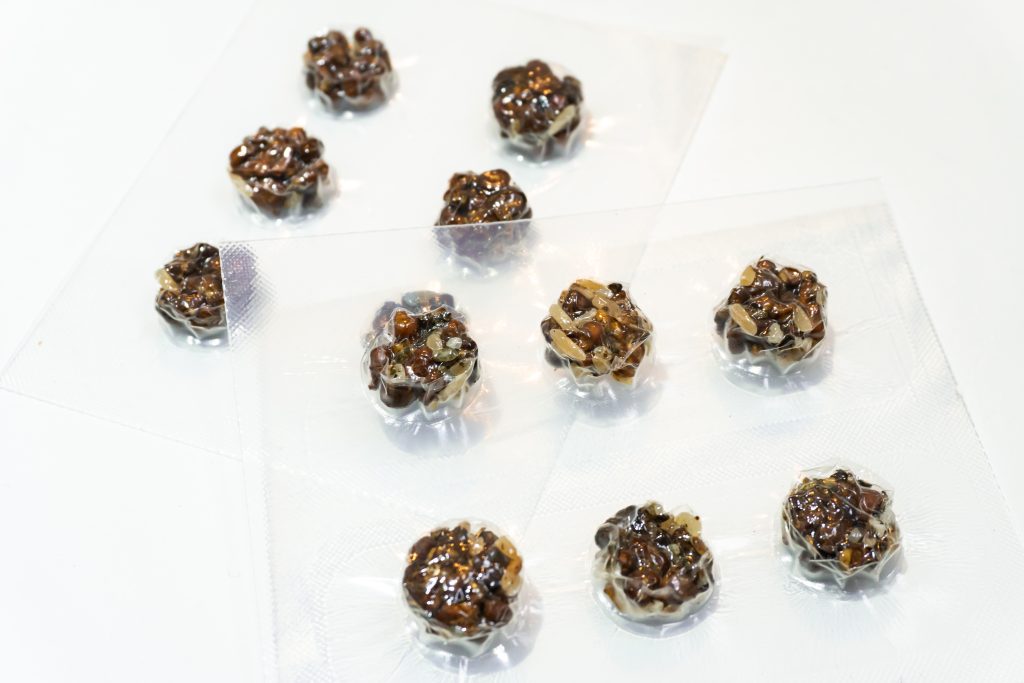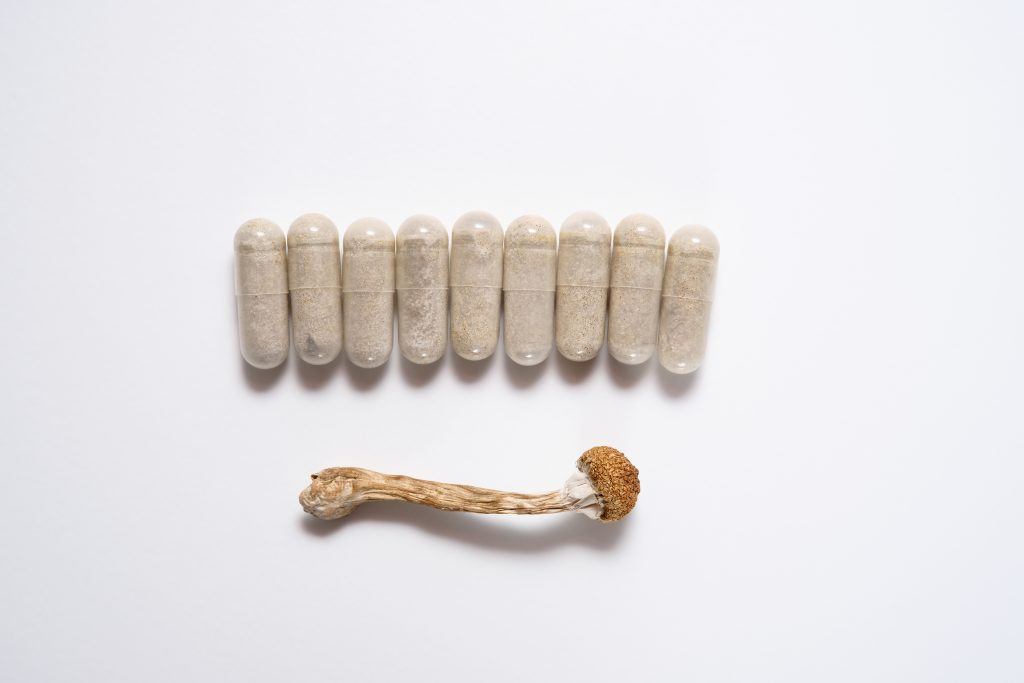Microdosing Mistakes Part Two: Dosage and Consistency

Introduction
Microdosing. Millions of people are doing it around the world and reporting benefits that sound almost too good to be true: clearer mind, more creativity, reduced anxiety, and increased energy, to name a few.
But many people do it and do not seem to get any benefits.
This begs the question: can you do it wrong?
The short answer is yes. At least, there are definitely a few common mistakes that many people make.
These cardinal mistakes of microdosing can lead people to confusion, uncertainty, and, importantly, a lack of benefits.
So, what are they?
Well, in this two-part series on Chemical Collective, Microdosing Mistakes and Solutions, we are looking at three of the most common microdosing mistakes. But do not worry, we are also giving solutions for each mistake to make sure you avoid them and can make the most of your microdosing experience.
In part one, we looked at three fundamental things to understand about psychedelic microdosing and then explored the first fundamental mistake: not documenting your microdosing experiences. We also shared how consistent tracking, through simple data collection, can be an essential tool for gaining insights and optimising your results.
In this post, we will focus on two more common mistakes: not calibrating your dose, and having a short-term mindset. I will also offer practical solutions for each, so you can fine-tune your approach and be in a position to gain the most from your microdosing practice.
Mistake #2: Not Calibrating Your Dose
A common mistake that many people make when microdosing is that they take a dose and never change it, even when it is not providing any benefits. Remembering that individual responses to microdosing are variable is important here.
This mistake might look like someone starting to microdose at an approximate standard dose. That would probably look like 0.1 grams of magic mushrooms or 10 micrograms of LSD. Then, when it does not go well, they do not change their dose, they just stop microdosing.
People make this mistake because they assume a ‘one-size-fits-all’ approach. They believe, or just assume, that a microdose will be standardised across the board; that a dose is a dose and will work or not. Adjusting the dose does not cross their mind, or it seems too complicated, so they just leave it at that.
For example, let us say Tom starts microdosing. He starts with 0.1 grams of magic mushrooms, because he has heard this is a microdose and assumes it is correct for everyone. However, on his first day, he notices some side effects. He has tingling sensations in his arms and feels lethargic and tired, and assumes that this is just part of the experience. Instead of adjusting his dose, Tom concludes that microdosing is not for him and stops altogether.
This mistake can also be made because many people are unfamiliar with the idea of calibrating a dose, or unsure about how to do it because they are not certain what signs to look for. Calibration involves observing subtle changes in your mood, energy levels, and cognitive abilities. These effects might not be dramatic, but they are important signals that help you find the right dose for your body.
Solution: Calibrate Your Dose for Optimal Results
The good news is that there is a simple way to avoid this mistake; by calibrating your dose.
This means changing the dose and finding one that works for you. By doing this, you can avoid the mistake of giving up too soon and instead fine-tune your dose for optimal microdosing.
Let us return to the example of Tom. Instead of giving up, what if he had taken the time to experiment with his dose? By reducing his dose from 0.1 grams to 0.08 grams, he might have found a level where the positive effects of microdosing could have come about without the negative side effects. This would have allowed him to continue microdosing and open the door to experiencing long-term benefits.
While the standard doses will work for the average person, they will not work for everyone. It is important to find a personalised dose.
This can be done in a short period of experimentation and calibration.
To do this, you can start by microdosing at 0.1 grams and note down any perceived effects; mental, emotional, and physical.
For example, on a mental level, you might notice an increase in focus, clarity, or creativity. Emotionally, look for subtle shifts in mood; do you feel calmer, less anxious, or more open? Physically, you might feel a slight change in energy levels or experience tingling sensations. Take note of any that you observe.
If no effects are felt, gradually raise the dose. On the next day, increase to 0.11 grams. Again, if no effects are felt, raise to 0.12 grams, and so on.
Once effects are felt, an assessment then needs to be made.
The best general advice would be to find the highest dose you can take without experiencing any obvious negative effects. So if you started to feel heaviness or anxiety or anything else negative at 0.12 grams, go back down to 0.11 grams and stick to this for the duration of a cycle of at least 4 weeks, where you can keep tracking for long term effects.
However, if the effects are only positive, you may keep increasing to 0.12 grams, 0.13 grams, and so on, until the experience turns negative. At that point, adjust back down to the dose where you only have positive effects. This might be a low dose where you can still function, but may also depend on whether you want to use it for working days, creative projects, or weekends in nature.
Mistake #3: The Short-Term Focus – Giving Up Too Soon
The third common mistake people that make when microdosing is simply not sticking with it for the duration of a cycle. Someone tries microdosing once or twice, does not feel the expected results, especially if they have not adjusted their dose, and then never tries it again.
This ties in with the first and second mistakes and can lead to people concluding that microdosing does not work for them, causing them to give up on it entirely.
For example, say Sarah hears about the benefits of microdosing and wants to give it a try. She tries it twice and expects to feel an immediate boost in focus and creativity. When she does not notice a significant change, she assumes it is not working and gives up.
This is unfortunate because many people like this may have actually found benefits from microdosing if they went through a calibration period to find their optimal dose, stuck with it for a complete cycle of at least four weeks, and tracked their experience.
This happens because people often expect instant results, influenced by unrealistic expectations they might have or stories they hear from others. It is important to remember that microdosing is usually not a quick fix. Its benefits tend to accumulate gradually over weeks of consistent practice. It is important to recognise that real change takes time, and microdosing works best when integrated into a regular routine over a longer period.
Solution: Commit to a Structured Protocol
Fortunately, there is a solution to this too; committing to a structured protocol for a set period.
This set period of following a protocol is known as a microdosing cycle, and it is recommended to start with a cycle of at least four to six weeks.
So this solution means selecting a protocol for a set period and committing to finishing it. This should be done whilst continuing to track experiences and observing any changes that may be happening.
Returning to the example of Sarah, if she had followed a structured protocol for four to six weeks, she would have given microdosing a chance to show its potential. By calibrating her dose and then finishing a cycle whilst she tracked her progress, she could have seen if and how her mood and mental clarity changed over time. Instead of giving up after just a couple tries, she might have achieved the results she was seeking in the long term.
The key is to be patient during a cycle, and allow time for the practice to show results.
At the end of the cycle, you can assess the data you have gathered through tracking and draw more meaningful conclusions about how microdosing has affected you over the long term.
When you do this, look for patterns in any perceived effects and changes and their consistency. For example, have you noticed improvements in your mood, emotional stability, or how you handle stress? Is your focus sharper or do tasks feel easier to complete? Do you feel more energised, or have you experienced fewer side effects over time? And have any of the benefits of microdosing been consistent, or have they fluctuated?
By reviewing this data, you can see if your mood or cognitive functioning has improved or if you feel more emotionally resilient or balanced. At this stage, you can make informed decisions about whether to continue microdosing at your current dose, adjust it, or pause and reflect before starting a new cycle. You might also want to start a new cycle with a different intention, tracking other variables you are curious about.
Synergy of the Three Solutions

As you can see, these solutions work together synergistically, rather than in isolation. They support each other, like three legs of a tripod.
Tracking your experiences helps you to calibrate your dose and find a working dose level that you can stick with for the duration of a four to six week cycle. The information you gather from tracking will also provide you with valuable data to assess your microdosing practice at the end of a cycle, and allow you to draw meaningful conclusions about its effects.
Knowing that you are gathering data to review later will also help you to stay patient with the process and maintain a long-term view, without worrying too much about short-term results.
Together, these three practices will support you with your microdosing practice.
Conclusion
So there we have it; three mistakes of microdosing, and their antidotes to ensure you avoid them and get the most from microdosing.
Did you make any of these mistakes? Do you think any of the solutions could help you find improved results from your microdosing experience?
Remember, each mistake—whether it is not documenting your experience, not calibrating your dose, or giving up too soon—can be avoided by committing to a structured, personal approach. Microdosing is a practice that requires patience and careful experimentation, but by avoiding these pitfalls, you will be well on your way to unlocking its full benefits.
Would tracking your experiences give you the information you need to assess the effects of microdosing, calibrate your dose more effectively, or stay patient with the process and commit to a long-term view? Could it provide valuable insights? Do you think your dose could be improved? Is it at a level that suits your purposes and allows you to operate in a healthy way? And are you willing to choose a protocol, stick to it, and complete a cycle to allow long-term benefits to emerge?
Whether you are planning to try microdosing or have already started, consider these questions.
By doing so, and adopting these approaches, I am confident you will be in a much better place to open the door to benefits from your microdosing practice.


